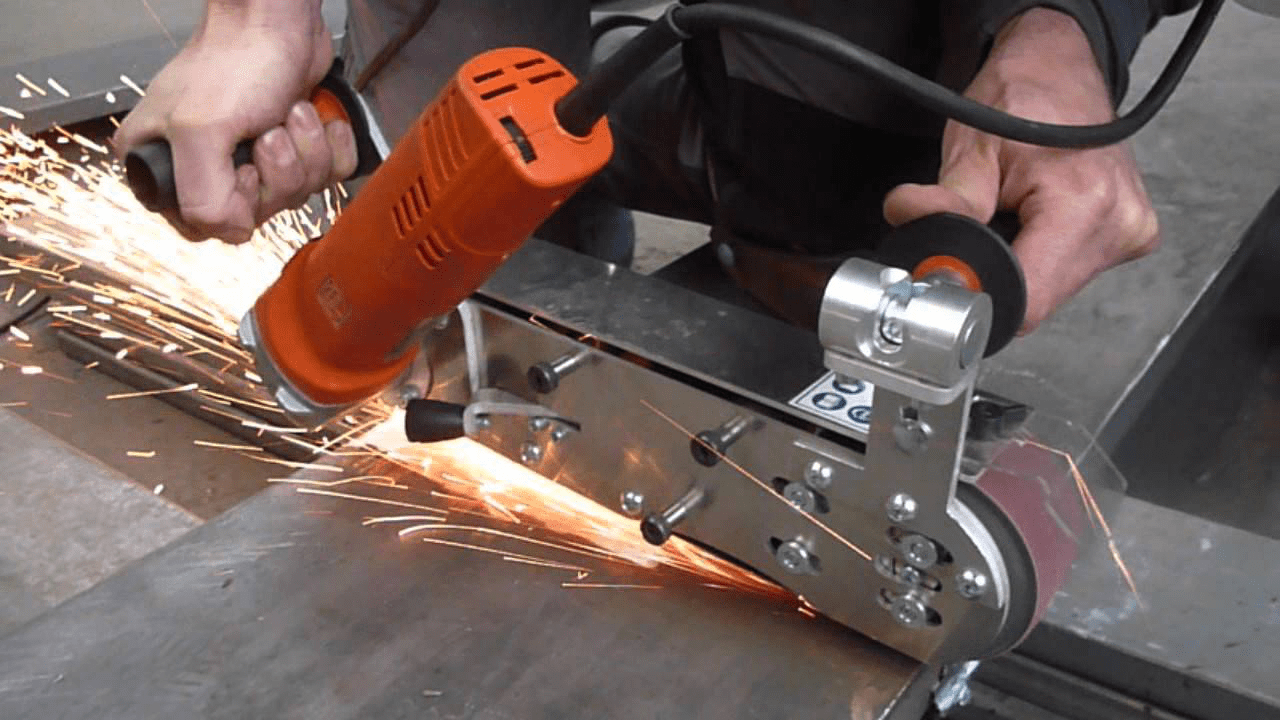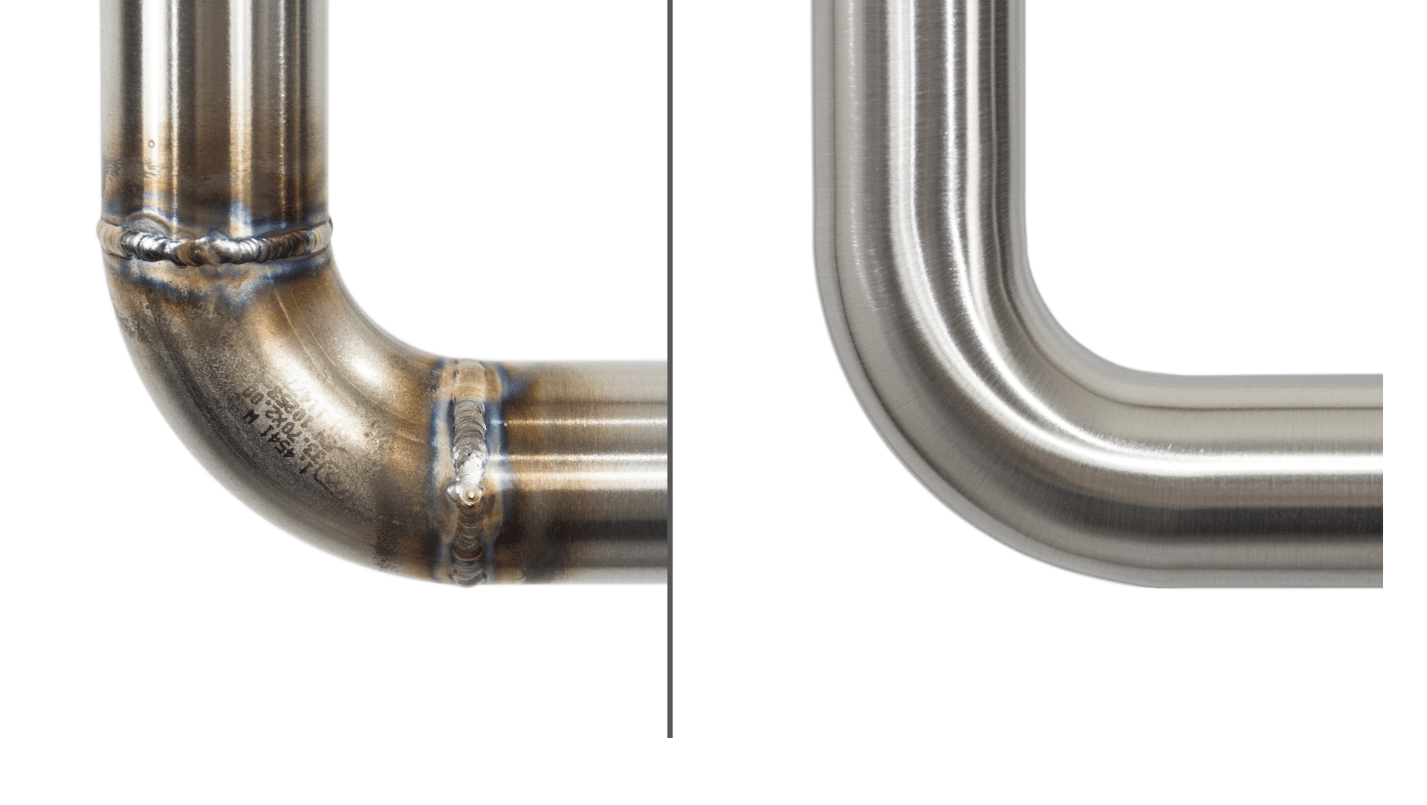Quá trình mài và hàn: Loại bỏ đường hàn | Năm 2020
2020-06-11Quá trình mài và hàn: Cách loại bỏ đường hàn
Cả quá trình mài và hàn thép tấm kim loại cần phải được tiến hành hết sức cẩn thận. Rốt cuộc, các quá trình này sẽ có ảnh hưởng trực tiếp đến chất lượng của các thành phần hoặc sản phẩm. Sau khi hàn các sản phẩm của bạn, bạn sẽ phải cung cấp một lớp hoàn thiện liền mạch.
Trong trường hợp, bạn đang tìm cách hoàn thiện sản phẩm của mình. Bạn đã đến đúng nơi. Trong bài viết này, chúng tôi sẽ cung cấp cho bạn chi tiết về cách loại bỏ và hoàn thiện đường hàn của bạn.
Hướng dẫn về Quy trình mài và hàn
Trước khi bắt đầu với công việc hàn, bạn cần tập trung vào một số yếu tố. Đối với người mới bắt đầu, bạn cần hiểu rằng mọi quy trình đều yêu cầu các kiểu hoàn thiện khác nhau. Loại chủ yếu phụ thuộc vào vật liệu và yêu cầu hoàn thiện bẩm sinh của chúng.
Ví dụ, thép carbon sẽ yêu cầu một kiểu hoàn thiện khác so với thép không gỉ. Trong bài viết này, chúng tôi sẽ tập trung vào hai vật liệu này. Vì vậy, không có bất kỳ sự chậm trễ nào nữa, chúng ta hãy bắt đầu!

Các loại mối hàn khác nhau
Tất nhiên, điều quan trọng là phải tìm hiểu về các loại hàn khác nhau. Dưới đây, chúng tôi sẽ tập trung vào các loại mối hàn này cho cả cacbon cũng như thép không gỉ.
Thép carbon
Hàn khí trơ kim loại
Nếu bạn đang tìm kiếm một quy trình hàn chi phí thấp cho thép cacbon, chúng tôi đề xuất phương pháp hàn khí trơ kim loại. Người ta thường gọi phương pháp này là quá trình hàn hồ quang kim loại bằng khí. Mặc dù tiết kiệm chi phí, nhưng có thể sử dụng kỹ thuật này trên hầu hết tất cả các hợp kim và kim loại thông thường.
Nó phổ biến vì nó mang lại kết quả vượt trội. Đối với vật liệu làm đầy, kỹ thuật sử dụng nguồn cấp dây bán tự động và khí trơ che chắn. Các ngành công nghiệp trên toàn cầu coi hàn MIG là lựa chọn tốt nhất cho các mặt hàng dày và nặng.
Tuy nhiên, nó có xu hướng tạo ra một đường hàn béo. Do các đặc tính này, hàn MIG có hiệu quả đối với thép cacbon. Vì vậy, một ý kiến hay là hãy thảo luận với nhà sản xuất của bạn, và họ sẽ hướng dẫn bạn một cách phù hợp.
Thép không gỉ
For stainless steel, you would be using the Tungsten Inert Gas (TIG) welding process. TIG is more precise in comparison to some other welding processes. It makes use of a tungsten electrode for the welding purpose.
In addition, you will not find a lot of TIG expertise in the industry. It is a fairly difficult skill set to master. But, that does not mean there aren’t any out there. You just need to reach out to a reliable manufacturer and you will find the TIG expertise.
The process also takes more time in comparison to metal inert gas welding. However, it offers better and finer results. Due to these advantages, the stainless industry is prone to using TIG instead of any other welding process.
Finishing Differences
In addition to focusing on the grind and welding process, you also need to focus on the finishing of the materials. Like their welding process, both stainless steel and carbon steel have different finishing methods. In
See below to learn the difference between finishes of stainless steel and carbon steel.
Carbon Steel Finishes
The finished piece’s application has a direct impact on the type of finish you choose. After all, you need to have a clear purpose of what you plan to achieve with these finishing at the end of the day. Also, not all types of finishes are compatible with every base material.
Therefore, you need to focus on the base material as well before finalizing the finish of your product or components. We will be talking about removing the weld seams, but the important thing to understand here is not that you do not have to remove all the welds seams.
There are certain weld seams that are important for the metal’s functionality. Keeping these weld seams would help the metal function more seamlessly and in a better manner. This holds true for most carbon steel applications as the seam would be invisible in most cases.
For instance, undersea applications. Even for the projects that would not be hidden from the human eye. In these cases, it is better to have unfinished welds. After all, these unfinished welds offer more strength in comparison to the finished ones.
The reason being, for finished welds, you actually have to remove a certain amount of material because of the grinding process. When it comes to finishing weld for a carbon steel process, you will be surprised by its simplicity.
You would not have to prepare the entire part or component. On the contrary, you would just have to focus on places where you plan to apply the paint. Moreover, if you want the paint to last long, we recommend having a well-scratched and rough surface.
Experience shows that well scratched and rough surfaces adhere to paint better especially when you want them to have a highly finished shine.
Stainless Steel Finishes
By now, you must know that stainless steel is stronger in comparison to carbon steel. In addition, stainless has a thinner gage in case of usage. Something modern electronics require. After all, these appliances are becoming compact day-by-day.
Stainless steel works well with commercial applications. In addition, its welding finishes have a multitude for these applications. Therefore, it is recommended to use stainless steel for modern, compact, commercial, and sophisticated applications.
For example, to add an aesthetic sense to the application, you can enjoy a highly-refined finish.
Note: In case, you are working with both materials. It is important to keep them separate especially in the finishing section. This would ensure that there is no cross-contamination when you are going from stainless steel to copper.
Initial Grind and Welding Process
The initial grind and welding process is usually the same. The objective clears the weld from all the excess stock. You would have to grind the joint down to a certain level. After that, you will work with the remaining parent metal.
If finishing is not your aim, then you can remove the initial stock using a simple grinding wheel. However, make sure that you wheel has an angle grinder.
Grinding Wheel
It is possible to use a grinding wheel to remove stock form both materials. However, do bear in mind that in the case of stainless steel, you need to have highly skilled workers even to achieve a passable quality result.
On the other hand, with carbon steel, you can achieve the desired results with little effort while using the grinding wheel. Just make sure that you adopt the right angel during grinding. After all, you do not want to experience pitfalls such as undercutting or gouging.
Flap Disc on Weld
For effective weld finishing, we recommend using a flap disc. They show impressive results for both carbon steel as well as stainless steel. Since they ensure long product life, therefore, they have an edge over their counterpart, standard grinding wheel.
In addition, flap disc offers superior operating control as well as comfort. They generate less noise and the quality of surface finish that they offer is outstanding. For carbon steel, you would save give and have effective results if you use the P40 coarse grit.
Take Away
A great manufacturer would always focus on the grind and welding process. After all, the manufacturer does understand its importance in terms of product life and finish. There are certain elements that contribute to deciding the right welding and grinding process.
For instance, the type of material you are planning to use, and product finish that you require among others. Like a lame man or a non-professional, you might not have the required knowledge to make this decision.
So, what are you to do? Simple, you need to reach out to consumers to us and we will answer all your queries in an effective manner. We will help you choose the right process to ensure great results. After all, it is our aim to please ours in every possible way.





